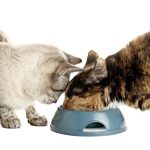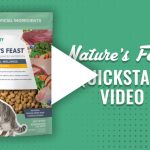Revolutionize Your Cat’s Nutrition With Cat Food Mold: Unlock Better Health Today!
Cat Food Mold: An Unseen Danger Lurking in Your Pet’s Bowl
Greetings, Cats Lover! As a dedicated pet owner, you strive to provide the best care for your feline friend, ensuring they have a nutritious diet. However, have you ever considered the potential dangers of cat food mold? In this article, we will delve into the world of cat food mold, its causes, effects, and how to prevent it. Read on to learn more about this hidden threat that could be affecting your beloved pet.
Introduction
When it comes to your cat’s health, ensuring they consume fresh and safe food is of utmost importance. Unfortunately, even the most diligent owners may overlook the presence of mold in their pet’s food. Cat food mold refers to the growth of fungi on commercially produced or homemade cat food. This can occur due to various factors, including improper storage, high moisture content, and exposure to air.
1 Picture Gallery: Revolutionize Your Cat’s Nutrition With Cat Food Mold: Unlock Better Health Today!

Mold poses a significant health risk to cats, as it can produce mycotoxins that are harmful when ingested. These toxins can lead to a range of health issues, from mild gastrointestinal discomfort to severe allergic reactions. Understanding the causes, effects, and prevention methods for cat food mold is crucial for every cat owner.
What is Cat Food Mold?
🐱 Cat food mold refers to the growth of fungi on cat food, both dry and wet varieties. This can occur due to several factors such as improper storage, high moisture content, and exposure to air. Mold growth on cat food is dangerous as it can produce mycotoxins that are harmful when ingested by cats. It is essential to be aware of the signs and risks associated with cat food mold to protect your pet’s health.
Causes of Cat Food Mold

Image Source: truthaboutpetfood.com
🍽️ Improper Storage: Storing cat food in humid or warm environments can create an ideal breeding ground for mold. Ensure you store cat food in airtight containers and away from moisture-prone areas to prevent mold growth.
🌧️ High Moisture Content: Wet cat food, in particular, is susceptible to mold growth due to its high moisture content. Avoid leaving wet food out for extended periods and discard any leftovers after a few hours.
💨 Exposure to Air: Cat food that is left exposed to air for too long can become a breeding ground for mold. Properly seal open bags or cans of cat food to prevent air exposure and subsequent mold growth.
🚫 Contaminated Ingredients: Mold can also originate from contaminated ingredients used in cat food production. It is crucial to choose reputable brands that prioritize quality control measures to minimize the risk of mold contamination.
Effects of Cat Food Mold
🤢 Gastrointestinal Discomfort: Consuming moldy cat food can lead to gastrointestinal issues such as vomiting, diarrhea, and abdominal pain. These symptoms can range from mild to severe, depending on the level of mold exposure.
🤧 Allergic Reactions: Some cats may develop allergic reactions to the mycotoxins present in moldy cat food. These reactions can manifest as skin rashes, itching, sneezing, and watery eyes. If your cat displays any of these symptoms, consult a veterinarian immediately.
🌡️ Temperature Regulation Issues: Prolonged ingestion of mycotoxins from moldy cat food can affect a cat’s ability to regulate body temperature. This can result in fever or hypothermia, depending on the specific mycotoxins present.
🌿 Long-term Health Consequences: In severe cases, where cats have been consuming moldy cat food for an extended period, long-term health consequences can occur. These may include liver damage, respiratory issues, and compromised immune function.
Who is at Risk?
🐾 All cats are susceptible to the dangers of cat food mold, regardless of age or breed. However, certain factors may increase a cat’s risk of exposure and adverse reactions. Cats with compromised immune systems, such as those with feline immunodeficiency virus (FIV) or feline leukemia virus (FeLV), are particularly vulnerable. Additionally, kittens, elderly cats, and those with pre-existing health conditions may be more prone to the negative effects of moldy cat food.
When Should You Be Concerned?
🕵️ It is crucial to be vigilant when it comes to the quality and safety of your cat’s food. If you notice any signs of mold growth on your cat’s food, such as visible spots or an unusual smell, do not feed it to your pet. Additionally, if your cat exhibits any symptoms of gastrointestinal discomfort or allergic reactions after consuming their food, it is essential to consult a veterinarian promptly.
Where Does Cat Food Mold Thrive?
🌡️ Cat food mold thrives in warm, moist environments, making it crucial to store cat food properly. Avoid storing cat food near areas prone to humidity, such as the bathroom or laundry room. Instead, choose a cool, dry location, and ensure the food is sealed tightly to prevent air exposure.
Why is Cat Food Mold Dangerous?
❗ Cat food mold poses a significant threat to your pet’s health due to the mycotoxins it can produce. These toxins can lead to a range of health issues, from mild gastrointestinal discomfort to severe allergic reactions. Prolonged exposure to moldy cat food can result in long-term health consequences, compromising a cat’s liver function, respiratory system, and immune response.
How Can You Prevent Cat Food Mold?
🔒 Preventing cat food mold requires a proactive approach to food storage and handling. Here are some essential tips to keep your cat’s food mold-free:
1. Proper Storage:
Store cat food in airtight containers to prevent air exposure and moisture intrusion.
2. Temperature Control:
Avoid storing cat food in areas that are susceptible to temperature fluctuations or high humidity.
3. Timely Consumption:
Ensure your cat’s wet food is consumed within a few hours of opening and do not leave it out for extended periods.
4. Inspection:
Regularly inspect your cat’s food for any signs of mold, such as visible spots or an unusual smell.
5. Quality Brands:
Choose reputable cat food brands that prioritize quality control measures to minimize the risk of mold contamination.
Advantages and Disadvantages of Cat Food Mold
Advantages:
✅ Early Warning Sign: The presence of mold on cat food can serve as an early warning sign of potential food safety issues.
✅ Increased Awareness: Learning about the risks of cat food mold can help owners become more conscious of their pet’s food quality and take necessary precautions.
Disadvantages:
❌ Health Risks: Consumption of moldy cat food can lead to various health issues, ranging from mild gastrointestinal discomfort to long-term organ damage.
❌ Veterinary Expenses: Treating health complications resulting from moldy cat food can lead to substantial veterinary expenses.
❌ Emotional Stress: Witnessing your beloved pet suffer from the consequences of moldy cat food can cause emotional distress for owners.
Frequently Asked Questions (FAQs)
1. Can I remove mold from cat food and still feed it to my cat?
No, it is not safe to remove mold from cat food and feed it to your cat. Even if you remove visible mold, the mycotoxins may still be present, posing a risk to your cat’s health.
2. Can dry cat food get moldy?
Yes, dry cat food can also become moldy if it is improperly stored or exposed to moisture. Always check for signs of mold before feeding your cat.
3. Are certain cat breeds more susceptible to mold allergies?
While there is no conclusive evidence to suggest that certain cat breeds are more susceptible to mold allergies, individual cats may have varying sensitivities to allergens, including mold.
4. Can mycotoxins from moldy cat food affect humans?
While mycotoxins from moldy cat food primarily pose a health risk to cats, humans can also be affected by exposure to mycotoxins. It is important to handle moldy cat food with caution and practice good hygiene.
5. Can freezing cat food prevent mold growth?
Freezing cat food can slow down mold growth, but it does not eliminate the risk entirely. Proper storage and timely consumption are still crucial in preventing mold growth.
Conclusion
In conclusion, cat food mold is a silent danger that can pose significant health risks to your feline companion. From gastrointestinal discomfort to long-term organ damage, the consequences of moldy cat food should not be taken lightly. By understanding the causes, effects, and prevention methods for cat food mold, you can ensure the safety and well-being of your beloved pet. Remember to store cat food properly, inspect it regularly, and choose reputable brands to minimize the risk of mold contamination. Your cat’s health is in your hands, so take the necessary steps to keep their food mold-free and their spirits high.
Final Remarks
📢 The information provided in this article is intended for educational purposes only and should not replace professional veterinary advice. If you suspect your cat has consumed moldy cat food or is displaying any health issues, please consult a veterinarian immediately. Remember, prevention is the key to keeping your pet happy and healthy. Take the necessary precautions to ensure your cat’s food is free from mold, and always prioritize their well-being. Together, we can create a safe environment for our feline friends to thrive in.
This post topic: Cats



